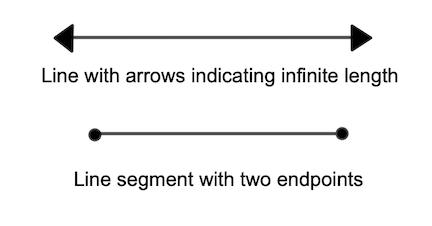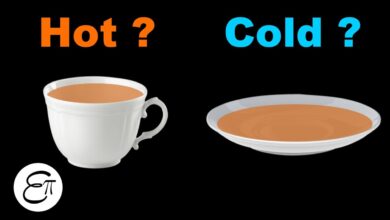A Part of a Line Consisting of Two Endpoints And All Points between Them: Master the Segment.

A line segment is a part of a line consisting of two endpoints and all the points between them. It is a measurable portion of a line that is defined by two specific points, known as endpoints.
Any point that falls between these two endpoints and lies on the same line is included in the line segment. This concept is illustrated by considering a line with two endpoints, A and B. The segment would consist of all the points along the line between A and B.
The term “line segment” is commonly used in mathematics to describe this specific portion of a line.

Credit: www.mdpi.com
Contents
Understanding Line Segments
A line segment is a part of a line that is defined by two endpoints and includes all the points between them. These endpoints mark the beginning and end of the segment. It is a measurable section of a line and is represented as a straight line connecting the two points.
What Is A Line Segment?
A line segment is a measurable part of a line that consists of two points, called endpoints, and all points between them.
Characteristics Of A Line Segment
- Endpoint: The last point that comprises a line segment.
- Dimensionless Position: A point in space designated by an ordered pair to define its location.
- Included Points: Every point that falls between two endpoints but on that line is included in the line segment.
A ray is the part of a line consisting of one endpoint and all the points of the line on one side of the endpoint. Opposite rays are collinear rays with the same endpoint, forming a line.

Credit: study.com
Naming And Representing Line Segments
A line segment is a part of a line consisting of two endpoints and all points between them. It is important to be able to accurately name and represent line segments, as it helps us communicate and understand geometric concepts.
How To Name A Line Segment
When naming a line segment, we typically use its endpoints. An endpoint is the last point that comprises a line or line segment. To name a line segment, we simply list the endpoints in order, with a line segment symbol (—) placed directly above them. For example, if the endpoints of a line segment are A and B, we would name the line segment as AB.
Representing Line Segments On A Graph
Line segments can also be represented on a graph. This allows us to visualize and analyze their position and length more effectively. On a graph, the x and y axes provide a coordinate system that helps us locate and plot points.
To represent a line segment on a graph, we plot the coordinates of its endpoints as points and then draw a line between them. The length of the line segment can be determined using the distance formula or by counting the number of units between the endpoints on the graph.
| Endpoint | Coordinates |
|---|---|
| A | (x1, y1) |
| B | (x2, y2) |
By plotting the coordinates of A and B and connecting them with a line, we accurately represent the line segment on the graph.
Understanding how to name and represent line segments is crucial for success in geometry. It allows us to communicate geometric concepts effectively and visualize them on a graph.
Measuring Line Segments
A line segment is the identifiable part of a line with two distinct endpoints and all the points located in between them. It represents a measurable portion of a line, providing a clear and defined span along the length of the line.
Tools For Measuring Line Segments
When it comes to measuring line segments, there are various tools that can be used. These tools are designed to provide accurate measurements and help individuals understand the length of a line segment. Here are some common tools used for measuring line segments:
- Ruler: A ruler is one of the most basic and commonly used tools for measuring line segments. It is typically made of plastic or metal and has markings indicating units of measurement. By placing the ruler along the line segment, one can easily determine its length.
- Tape Measure: A tape measure is a flexible tool with measurements marked along its length. It is often used for measuring longer line segments or objects that are not straight. The tape can be extended and locked in place to measure the desired length.
- Vernier Caliper: A vernier caliper is a more advanced measuring tool that can provide precise measurements. It consists of two jaws that can be adjusted to fit around the line segment. The measurements are then read from the scale or digital display.
- Electronic Distance Meter: An electronic distance meter, also known as a laser distance meter, uses laser technology to measure the length of line segments. It emits a laser beam that reflects off the endpoint and calculates the distance based on the time it takes for the beam to return. This tool is commonly used in construction and surveying.
Units Of Measurement For Line Segments
When measuring line segments, it is important to use appropriate units of measurement to ensure accuracy and consistency. Here are some commonly used units for measuring line segments:
- Millimeters (mm): Millimeters are the smallest unit of measurement commonly used for line segments. They are often used when measuring very small or precise distances.
- Centimeters (cm): Centimeters are larger units of measurement commonly used for line segments. They are often used for measuring everyday objects or shorter distances.
- Meters (m): Meters are the standard unit of measurement for line segments. They are commonly used for measuring longer distances or larger objects.
- Kilometers (km): Kilometers are used for measuring very long line segments or distances. They are often used in geography or transportation.
Different units of measurement may be more appropriate depending on the size and scale of the line segment being measured. It is important to select the appropriate unit to ensure accurate measurements and clear communication of the length of the line segment.

Credit: www.wired.com
Types Of Line Segments
A line segment is a part of a line that includes two endpoints and all the points in between them. It is a measurable section of a line.
Open And Closed Line Segments
A line segment can be categorized as either open or closed.
Equal And Unequal Line Segments
Line segments can also be classified as equal or unequal, based on their length.
Applications Of Line Segments
A line segment is the part of a line consisting of two endpoints and all points between them. This fundamental concept has numerous real-world applications and is extensively used in geometry for various purposes.
Real-world Examples
Line segments are commonly seen in real-world applications such as:
- Measurement of physical objects, like the length of a table or the width of a building
- Construction projects where accurate measurements and divisions are crucial for precision
- Roads and pathways, where the division of distances and segments is necessary for navigation
- Graphical representations in design and engineering, where line segments are used to create shapes and structures
Use Of Line Segments In Geometry
In geometry, line segments are utilized in various ways:
- To define the sides of geometric shapes, such as triangles, rectangles, and polygons
- For measuring distances between points on a coordinate plane
- As a fundamental element in understanding and constructing angles and perpendicular lines
- When dealing with proofs and theorems, particularly in the study of Euclidean geometry
Conclusion
Understanding the concept of a line segment is crucial in geometry. It consists of two endpoints and all points in between. By grasping this definition, you can enhance your knowledge of geometric shapes and their properties. Mastering the fundamentals leads to a deeper understanding of mathematics.



